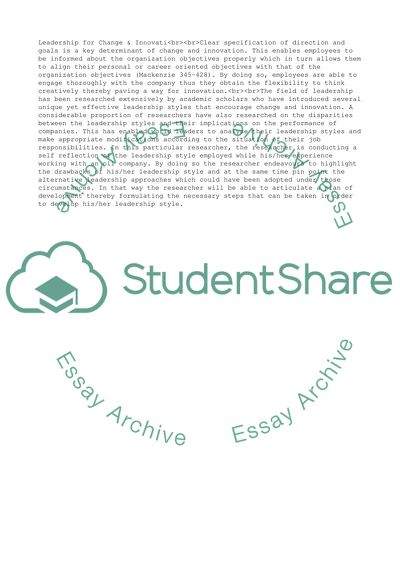Cite this document
(“Leadership for Change & Innovation Essay Example | Topics and Well Written Essays - 1750 words”, n.d.)
Leadership for Change & Innovation Essay Example | Topics and Well Written Essays - 1750 words. Retrieved from https://studentshare.org/management/1656057-leadership-for-change-innovation
Leadership for Change & Innovation Essay Example | Topics and Well Written Essays - 1750 words. Retrieved from https://studentshare.org/management/1656057-leadership-for-change-innovation
(Leadership for Change & Innovation Essay Example | Topics and Well Written Essays - 1750 Words)
Leadership for Change & Innovation Essay Example | Topics and Well Written Essays - 1750 Words. https://studentshare.org/management/1656057-leadership-for-change-innovation.
Leadership for Change & Innovation Essay Example | Topics and Well Written Essays - 1750 Words. https://studentshare.org/management/1656057-leadership-for-change-innovation.
“Leadership for Change & Innovation Essay Example | Topics and Well Written Essays - 1750 Words”, n.d. https://studentshare.org/management/1656057-leadership-for-change-innovation.


